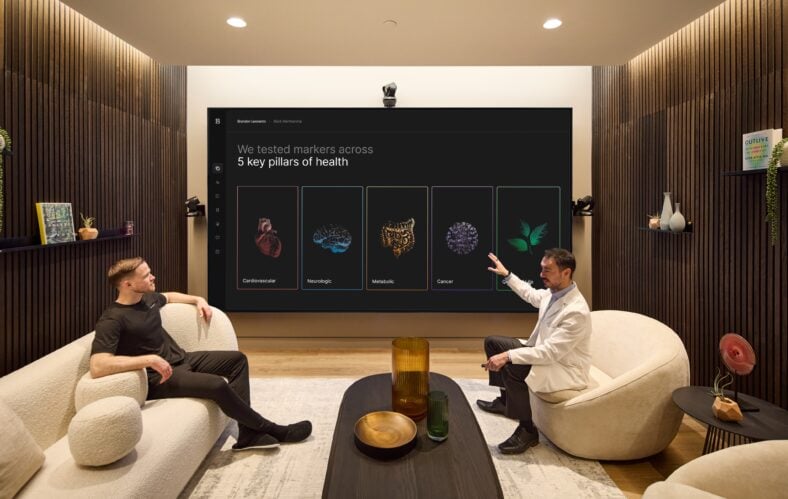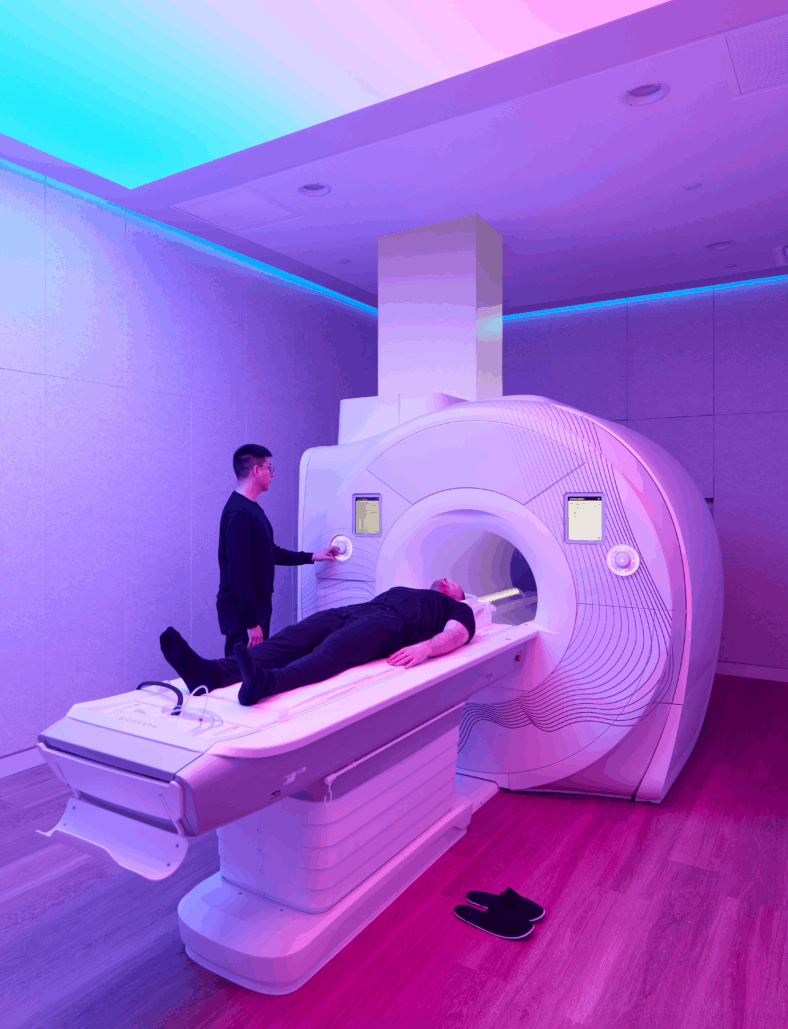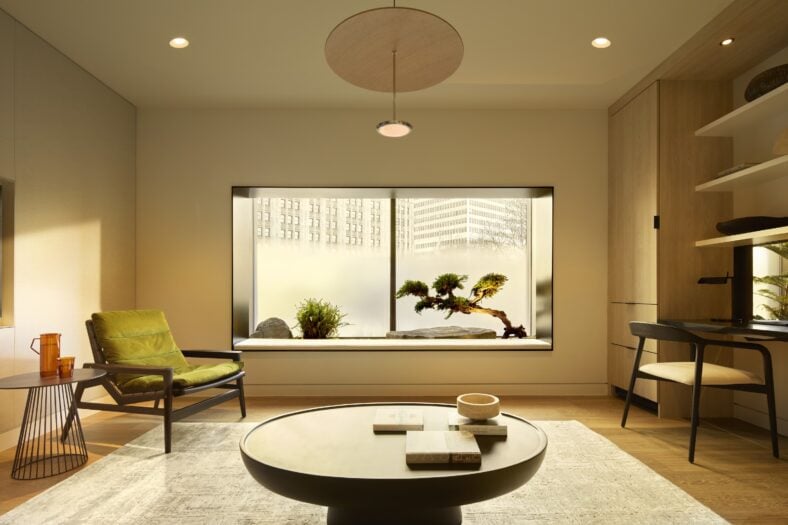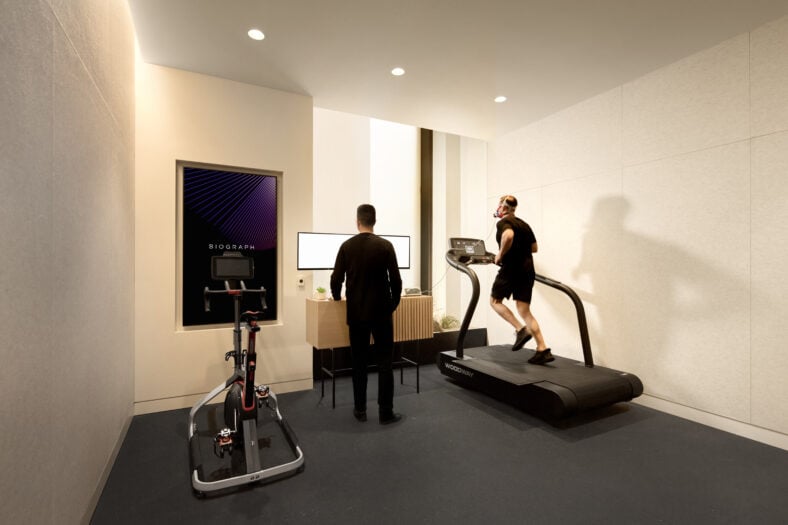
From Silicon Valley to Wall Street, longevity is the latest status symbol. What’s the point of sporting a $20,000 Rolex if your ticker is down to its last tick? In 2025, the real power move is squeezing more healthy years out of your body. And it’s not just the elite athletes and multi-million dollar tech titans like Bryan Johnson and Dave Asprey (who says he wants to live until 180 years old). It’s CEOs trying to stay sharp for another decade. It’s professionals in their 40s and 50s who’ve watched friends get sick too soon. It’s anyone who thinks it’s worth dolling out the cash to catch disease before it happens, not after.
Enter Biograph, a new preventive health and longevity clinic in San Mateo and New York. Instead of the rushed 30-minute annual check-up, Biograph offers a six-hour check-up, down, and all around. Members go through more than 20 assessments: a DEXA scan that maps bone density and body composition, a coronary CT scan that looks for plaque in the arteries, a whole-body MRI that scans for hidden cancers, aneurysms, or early signs of neurodegeneration, and a VO₂ max treadmill test that measures how efficiently your body uses oxygen under stress.
Biograph’s model is based on five health pillars: atherosclerotic cardiovascular disease, metabolic dysfunction, brain health and neurodegenerative disease, cancer risk and early detection, and quality of life metrics. “This is not your typical annual physical,” says Dr. Michael Doney, the Executive Medical Director at Biograph. “We want people to walk in and realize they’re starting a different kind of health journey—one that’s proactive, not reactive.”

Curious to see what happens when a check-up goes way beyond “turn your head and cough.” I booked a visit at their Bay Area location. Biograph looks nothing like the sterile, fluorescent-lit doctor’s office. There are no weathered issues of People magazine in the waiting room. The lighting is soft, the design sleek and modern.
My waiting area was actually a private office, outfitted with cozy furniture, healthy snacks, and a bathroom featuring one of those Japanese toilets that lifts its lid automatically when you walk in. Instead of paper gowns, I was given a robe, workout clothes, and slippers. A concierge walked me through the day’s schedule, which also appeared on a flatscreen in the room so I could follow along step by step. The whole experience was designed to take the edge off the anxiety of medical testing.
It worked for me. I’ll admit I’ve always had a streak of hypochondria, which makes me both the perfect and the worst candidate for a place that promises to scan every inch of your body for hidden disasters. That tension eased a little when the day began not with a needle but a luxurious shower. Then came the first test: my favorite, bloodwork. But this blood letting was administered in perhaps the most comfortable setting I’ve ever given blood. Instead of a stiff chair in a fluorescent exam room, I reclined in the medical equivalent of a medical La-Z-Boy. I was then given a series of tests measuring my hearing, eyesight, mental dexterity, and even my anxiety.

Next up was the video movement analysis (DARI), where numerous cameras tracked my joints and posture as I moved through a short sequence of squats and lunges. The idea was to reveal weaknesses in balance, flexibility, and mobility—things that can become predictors of frailty later in life. The intensity picked up with the VO₂ max. For those who haven’t had the pleasure of experiencing this, basically, it measures how much oxygen your lungs, heart, and muscles can pull in and use when you’re working as hard as possible. Professional athletes obsess over high VO₂ max. I obsessed over surviving the test.
You strap on what looks like a fighter-pilot mask, hook into a web of wires, and start jogging on a treadmill. Every few minutes the incline and speed ratchet up until your legs are on fire and your lungs are about to explode. The silver lining is that this test tells you something most doctor’s visits never do: how fit you actually are, which in my case is, is not very. Other tests map your fitness and your risks in detail, but the crown jewel is the full-body, 60-minute MRI. For anyone with claustrophobia, that might sound like 60-minutes in a coffin. The Biograph team knows this and goes out of their way to make it comfortable. You’re given headphones, a video screen, even the option of watching your favorite streaming service. I watched HBO’s NFL docuseries Hard Knocks, while the machine scanned me from head to toe. Easy peasy.

When I was done, a scrumptious lunch and latte awaited me in my private suite. This was much appreciated since I’d been fasting since 7 p.m. the previous night. A few weeks later, I received an in-depth, in-person Zoom call about my health, including an instagramable picture of my brain. Dr. Doney could not have been more helpful and informative. I am pleased to report that I have no serious health issues. But this isn’t always the case.
“Overall, about one in six people who visit Biograph will find something urgent or life-altering,” he says. “It could be a silent cancer, or a blockage in the heart with no symptoms at all.”
He told me the story of one patient who came in with no obvious warning signs. Their blood markers looked fine and they felt perfectly healthy, but a coronary CT angiography revealed a critical blockage in the heart. Within a week, that patient had a stent placed. “These are things you would never pick up in a standard annual physical, and catching them early can completely change the trajectory of someone’s life,” Dr. Doney says. In the next few weeks, I will receive a personalized fitness and nutrition plan designed specifically to remedy the issues that need to be addressed. I won’t get too personal. But let’s just say I have some fat where it shouldn’t be.
Membership to Biograph does not come cheap. The Core package starts at $7,500 and covers the full day of diagnostics and follow-up. The Black package costs $15,000 and adds concierge-level services, ongoing consultations, and access to specialists throughout the year. But Dr. Doney argues the price should be weighed against what’s at stake. “If you think about what people spend on cars and vacations, this is the one investment that can actually buy you more healthy years,” he says.
In other words, maybe get the Ferrari after you know your heart can handle it.















